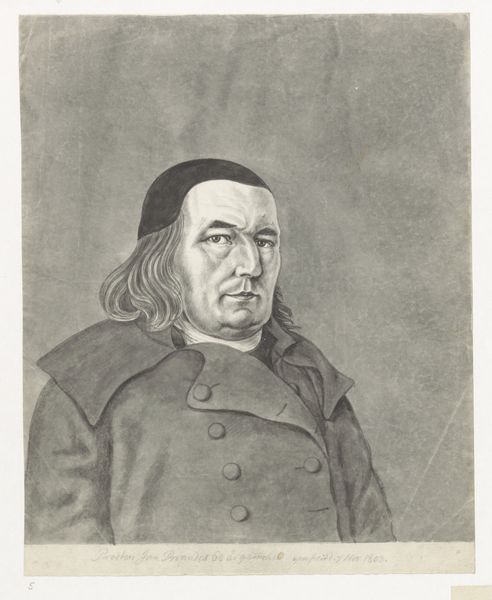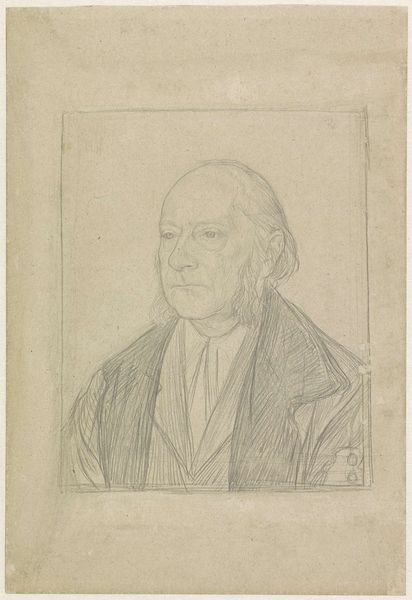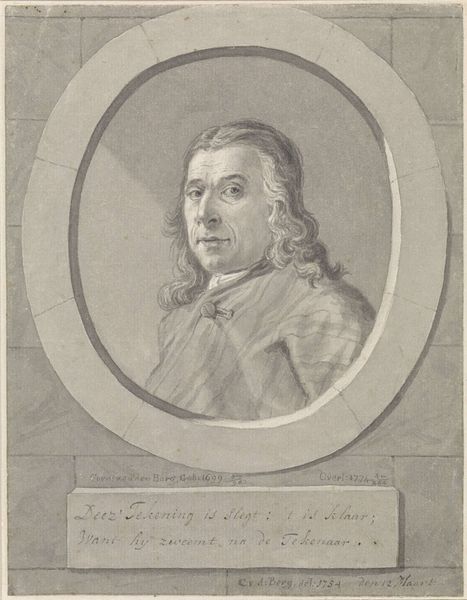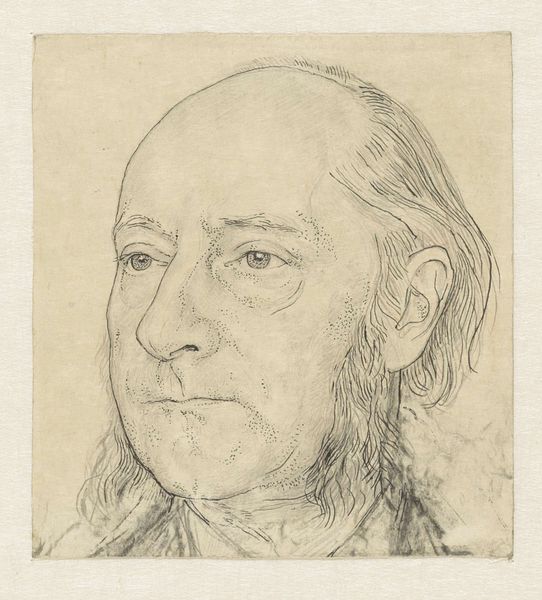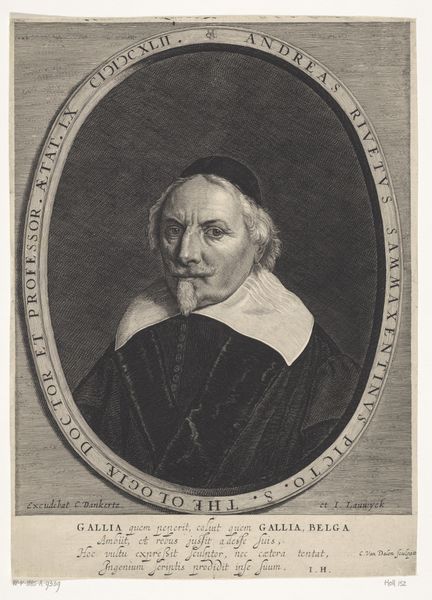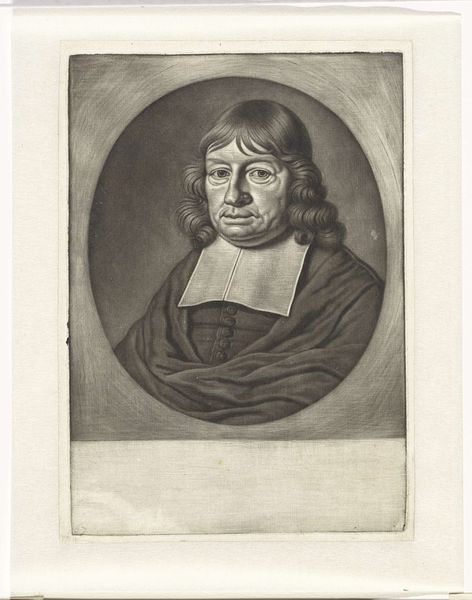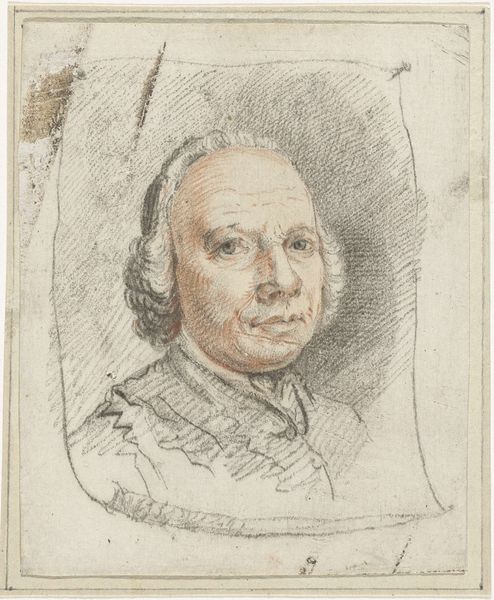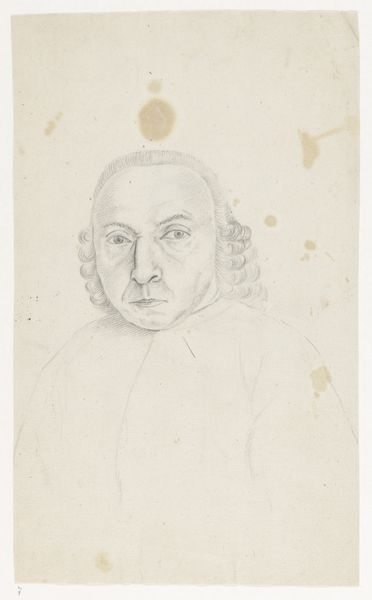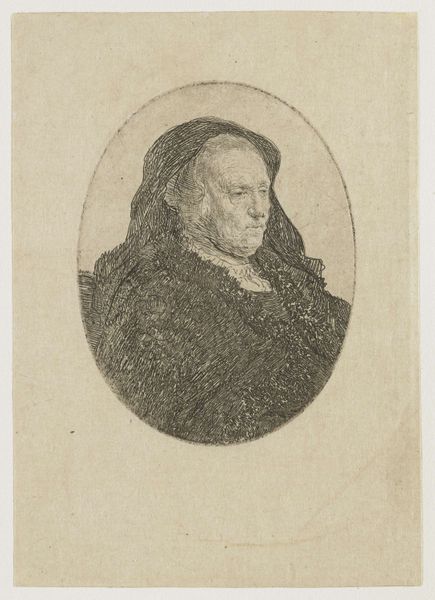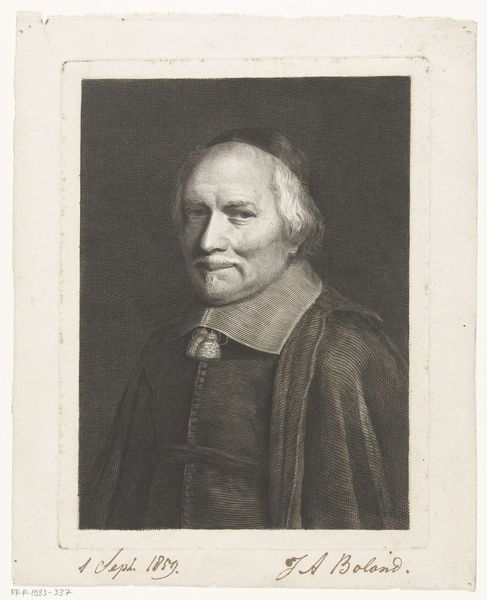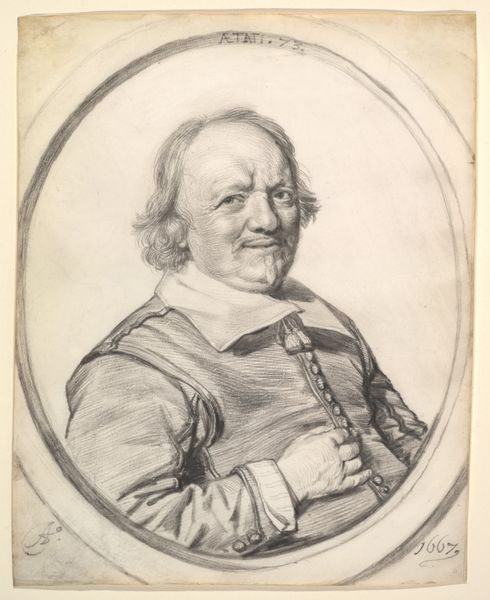
drawing, pencil
#
portrait
#
drawing
#
self-portrait
#
caricature
#
pencil drawing
#
pencil
#
portrait drawing
#
realism
Dimensions: height 324 mm, width 228 mm
Copyright: Rijks Museum: Open Domain
Editor: This is a pencil self-portrait of Jan Brandes, likely from 1806. It’s a strikingly realistic image. What resonates with me most is the artist’s direct gaze—there's almost a challenge there. How do you interpret this work? Curator: The gaze is key. I see not just a self-portrait but a statement of selfhood within a rapidly changing world. Brandes, positioned at the cusp of modernity, uses realism, but remember, realism isn’t neutral. It is very much rooted in social power. Who had access to this kind of representation? Whose stories were deemed worthy of preserving? How might Brandes' social standing impact our understanding of his intentions? Editor: That’s interesting. So, by depicting himself so plainly, is he making a statement about his position in society? Curator: Exactly. Think about what realism means at that moment in history. It’s tied to the rise of the bourgeoisie, to new forms of scientific observation and also a kind of self-regard. He’s consciously crafting an image. Look at the minute detail in his clothing; a symbol of status in his time. Consider also the social function of portraiture and self-portraiture at the beginning of the 19th century: what does it mean to be rendered visible? What is made invisible in that rendering? Editor: I see how simply labeling this ‘realism’ is insufficient. Thinking about how portraits function within a social structure really opens up how we view the intention. Curator: Precisely! This self-portrait becomes a document, and that document is imbued with layers of historical and social significance. I would invite viewers to think more about what kind of labour goes into the creation, the access that somebody might have, and the visual politics behind even something as seemingly ‘straightforward’ as this. Editor: Thank you, I had not considered that point of view, that representation of that time has implicit connections with race, gender, and access to economic opportunities.
Comments
No comments
Be the first to comment and join the conversation on the ultimate creative platform.


